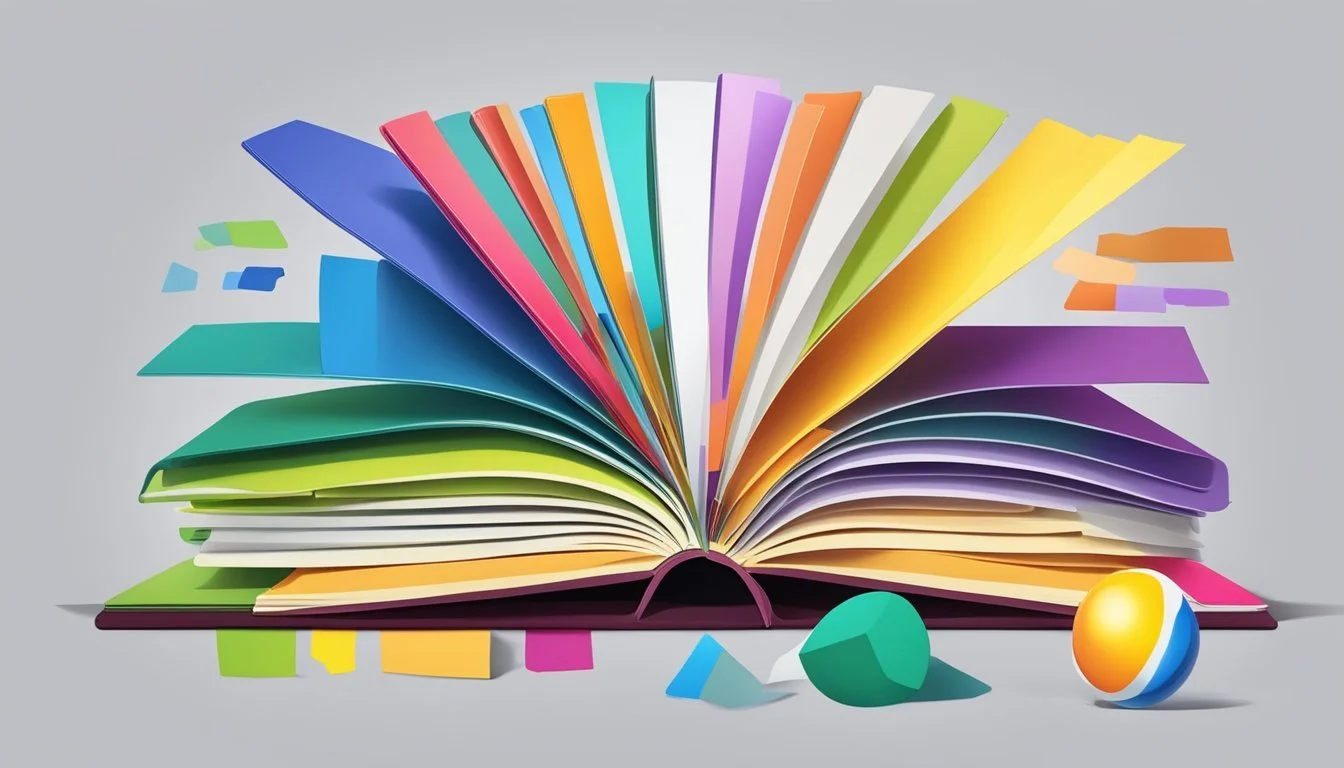Unlock Your True Self: Discover the Shocking Insights of the Color Personality Types Book!
Carol Ritberger's book "What Color Is Your Personality?" explores the fascinating link between colors and personality types. The author identifies four main color categories - red, orange, yellow, and green - that correspond to distinct personality traits and behaviors. By understanding one's color type, readers can gain valuable insights into their own tendencies, strengths, and potential areas for growth.
The book provides a personality test to help readers determine their dominant color type. Red personalities are described as sensing and thinking types who orient themselves through external stimuli. Orange types are sensing and feeling, focused on fulfilling others' emotional needs. Yellow and green round out the four main categories, each with its own set of characteristics.
Ritberger's color-based approach offers a unique lens for examining personality differences. The book explores how understanding these color types can improve self-awareness, enhance relationships, and even inform management strategies in professional settings. Its accessible format and intuitive color system make complex psychological concepts more approachable for a general audience.
Fundamentals of Color Personality Types
Color personality types link specific hues to core personality traits and behaviors. This framework combines psychological insights with visual associations to categorize individuals.
Historical Background
The concept of color personality types emerged in the late 20th century. Psychologists and researchers sought new ways to understand human behavior and interpersonal dynamics. They drew inspiration from color psychology and traditional personality assessment methods.
Early pioneers in this field included Carol Ritberger, who developed a system matching four colors to distinct personality types. Her work gained popularity in the 1990s and 2000s.
Color personality assessments built on established models like the Myers-Briggs Type Indicator (MBTI) and the Big Five personality traits. They aimed to offer a more accessible and visually engaging approach to self-discovery.
The Psychological Basis
Color personality types rest on the premise that individuals have innate preferences and tendencies. These shape their thoughts, feelings, and actions. The model typically identifies four main color categories: Red, Orange, Yellow, and Green.
Each color represents a cluster of traits and characteristics:
Red: Assertive, logical, task-oriented
Orange: Sociable, empathetic, relationship-focused
Yellow: Creative, optimistic, idea-driven
Green: Analytical, perfectionist, detail-oriented
Proponents argue that color associations tap into subconscious preferences and make personality insights more relatable. Critics question the scientific validity of such categorizations.
The approach draws on established psychological concepts like cognitive styles, emotional intelligence, and interpersonal needs. It simplifies complex personality theories for broader public consumption.
Understanding the Four Color Personalities
Color personality models categorize individuals into four main types, each associated with distinct traits and characteristics. These color-based systems provide insights into communication styles, strengths, and potential areas for growth.
Red Personality Traits
Red personalities are often described as bold, direct, and action-oriented. They thrive on challenges and possess natural leadership qualities. Reds tend to be:
• Confident and assertive • Results-driven and competitive • Quick decision-makers • Strong-willed and determined
These individuals excel in high-pressure situations and are not afraid to take risks. They value efficiency and may become impatient with lengthy discussions or indecisiveness.
Reds communicate in a straightforward manner and appreciate others who do the same. Their energy is typically high, and they prefer to be in control of situations.
Yellow Personality Traits
Yellow personalities are often characterized by their enthusiasm, optimism, and sociability. They bring a vibrant energy to their interactions and environments. Yellows are typically:
• Outgoing and expressive • Creative and imaginative • Spontaneous and fun-loving • Persuasive communicators
These individuals thrive in social settings and enjoy being the center of attention. They are natural networkers and excel at building relationships.
Yellows approach problems with creativity and tend to see the big picture rather than getting bogged down in details. Their positive outlook can be infectious, inspiring those around them.
Blue Personality Traits
Blue personalities are often described as empathetic, supportive, and harmony-seeking. They prioritize relationships and emotional connections. Blues tend to be:
• Caring and compassionate • Good listeners • Intuitive and perceptive • Cooperative team players
These individuals excel at creating a positive atmosphere and are often the peacemakers in group settings. They have a strong sense of loyalty and value deep, meaningful relationships.
Blues communicate with sensitivity and are adept at reading others' emotions. They may struggle with conflict and criticism, preferring to maintain harmony whenever possible.
Green Personality Traits
Green personalities are often characterized by their analytical, systematic, and detail-oriented approach. They value logic and precision in their work and interactions. Greens are typically:
• Methodical and organized • Thorough and accurate • Calm and reserved • Critical thinkers
These individuals excel in tasks that require careful analysis and problem-solving. They prefer to have all the facts before making decisions and may be perceived as cautious.
Greens communicate in a clear, concise manner and appreciate data-driven discussions. They tend to be more introverted and may need time alone to recharge their energy.
Key Figures in Color Personality Theory
Color personality theory has gained popularity through the work of several influential authors and researchers. Their insights have shaped how we understand and apply color-based personality assessments today.
Thomas Erikson's Contribution
Thomas Erikson, a Swedish behavioral expert, wrote the bestselling book "Surrounded by Idiots". This work popularized a color-coded system for understanding different personality types.
Erikson's model uses four colors: Red, Yellow, Green, and Blue. Each color represents distinct behavioral traits and communication styles.
Red personalities are typically dominant and results-oriented. Yellow types are social and optimistic. Green individuals tend to be analytical and patient. Blue personalities are often detail-oriented and cautious.
Erikson's approach has been widely adopted in business settings. It helps improve teamwork and communication by recognizing diverse personality types.
His color system offers practical tools for self-awareness and interpersonal relationships. It has resonated with readers worldwide, selling millions of copies in multiple languages.
Applying Color Personalities in Everyday Life
Color personality types provide insights into behavior and communication preferences. These frameworks can enhance interactions and productivity in various settings.
In the Workplace
Red personality types often excel in leadership roles. They tend to be decisive and results-oriented. Managers can assign them challenging projects that require quick decision-making.
Orange personalities thrive in dynamic environments. They adapt well to change and enjoy variety in their tasks. Team leaders can engage them with creative problem-solving opportunities.
Yellow types are natural communicators. They excel in roles that involve collaboration and idea-sharing. Employers can utilize their strengths in brainstorming sessions or client-facing positions.
Green personalities value harmony and stability. They work well in supportive roles and excel at creating calm work environments. Managers can tap into their ability to mediate conflicts and maintain team cohesion.
In Personal Relationships
Understanding color personalities can improve communication between partners. Red types may need to soften their direct approach when interacting with more sensitive green personalities.
Orange individuals bring spontaneity to relationships. They may clash with structured yellow types who prefer planning. Recognizing these differences can help couples find compromises.
Yellow personalities often initiate social interactions. They can help more introverted green types feel comfortable in group settings. This dynamic can create balance in friendships and romantic partnerships.
Green types offer emotional support in relationships. They may need to assert their own needs when paired with action-oriented red personalities. Open discussions about communication styles can strengthen bonds between different color types.
Critiques and Limitations of Color Personality Typing
Color personality typing faces criticisms regarding its scientific validity and potential social implications. Skeptics argue that categorizing complex human personalities into simplified color groups may lead to overgeneralization and stereotyping.
Scientific Scrutiny
Researchers question the empirical foundation of color personality typing. The lack of rigorous peer-reviewed studies supporting its claims raises concerns about its reliability and validity. Critics argue that the system oversimplifies human behavior, ignoring situational factors and individual variations.
Some psychologists label color typing as pseudoscience, pointing out its failure to meet scientific standards. They note the absence of standardized testing procedures and the potential for confirmation bias in interpreting results.
The system's predictive power is also debated. Skeptics argue that its broad categorizations may lead to self-fulfilling prophecies rather than accurate personality assessments.
Social and Ethical Considerations
Color personality typing may reinforce harmful stereotypes and limit personal growth. Critics worry it could be used to justify insensitive treatment or discrimination based on perceived personality traits.
The system might encourage lazy thinking, prompting people to judge others quickly based on color labels rather than getting to know them as individuals. This oversimplification could hinder genuine understanding and empathy in relationships.
Some argue that color typing may lead to self-limiting beliefs, with individuals feeling constrained by their assigned color. This could potentially stifle personal development and adaptability in different social or professional contexts.
Future of Color Personality Research
Color psychology and personality research continue to evolve, with exciting developments on the horizon. New technologies are enabling more sophisticated studies of how color preferences relate to individual traits and behaviors.
Brain imaging techniques like fMRI may provide deeper insights into the neural basis of color-personality connections. This could reveal how different hues activate specific brain regions associated with personality dimensions.
Machine learning algorithms are being applied to analyze large datasets of color choices and personality profiles. These AI tools may uncover subtle patterns and correlations that were previously undetectable.
Cross-cultural studies are expanding our understanding of how color associations vary across societies. This research examines both universal color-personality links and culturally specific interpretations.
Practical applications of color personality insights are growing in fields like marketing, web design, and product development. Companies are using color psychology to tailor their branding and user experiences.
Personalized color therapy interventions based on individual personality types are an emerging area of interest. These may be used to enhance mood, productivity, and wellbeing.
As research methods advance, the field of color personality is likely to yield more nuanced and empirically grounded findings. This could lead to refined personality assessment tools incorporating color preferences as key indicators.





